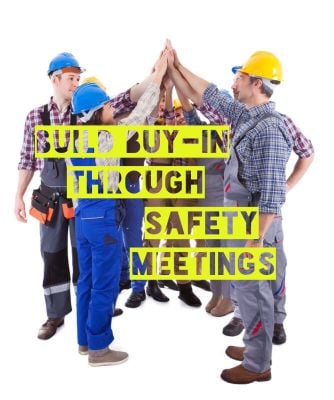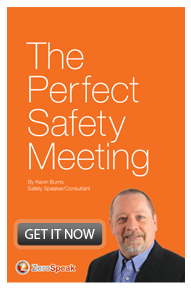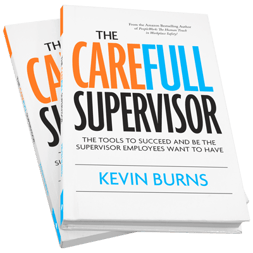Change the perception from HAVING to attend safety meetings, to WANTING to.
 Nowhere in the Occupational Health and Safety Code does it state that a safety meeting has to be enjoyable. But what if the requirement was that safety meetings had to be engaging? What if that was written into the Code that you could be fined or jailed if you did not engage your people in safety meetings? Would you finally stop the archaic, mind-numbing practices of lousy safety meetings? Would you, instead, spend some time raising the standards of the meeting?
Nowhere in the Occupational Health and Safety Code does it state that a safety meeting has to be enjoyable. But what if the requirement was that safety meetings had to be engaging? What if that was written into the Code that you could be fined or jailed if you did not engage your people in safety meetings? Would you finally stop the archaic, mind-numbing practices of lousy safety meetings? Would you, instead, spend some time raising the standards of the meeting?
There are standards for working at height, with dangerous goods, in pits, underground. You are required to ensure that employees understand and comply with these standards. But, where are the standards for holding engaging, uplifting safety meetings? Does there have to be a law passed before you will do it?
You claim to want to have a workplace with a strong safety culture. But you continue to turn your safety meetings into dull, half-hearted events. Safety meetings are a key rallying point of your culture. If you want to build safety buy-in, you’ve got to utilize your safety meetings as a key tool to do that.
Here are three ways you can use your safety meetings to build buy-in:
1Safety meetings should inspire. The safety meeting is not just a legal requirement. It is an opportunity to rally your people around a common theme - safety. Regardless of any differences that may exist, safety is a strategy that everyone can get behind. And there is no better place to start rallying everyone in a single-focused direction than at the safety meeting. The safety meeting is not supposed to be a bore-fest of data, numbers, reports and inspections. None of that makes people want to be better. None of it encourages, inspires or motivates people to want to be safe on the job. Interestingly, no other department in an organization is required by law to hold meetings - just safety. So stop meeting just the bare minimum. The safety meeting is an important tool in helping employees to buy-in to safety.
2Data doesn’t sell houses. Imagine a Realtor only wanted to show you stats, floor plans, and the legal land description but not the house. Would you buy that house based on seeing only PowerPoint slides of stats, drawings, paperwork and legal descriptions? Of course not. You would fire the Realtor and choose someone else. You want to know how a house makes you feel before you buy it. You want to have an attachment to the house. You want to be able to picture your furniture in the house. You want to see the view from the windows. You want to see the back yard, the kitchen where you will host friends, the bedrooms where your kids will grow up. You want to put your hands on it and experience it - not just read the statistics and data. To buy-in to safety, the same rules apply. People must build an attachment to safety. They have to see clearly how safety makes their lives better.
3Build a teamwork attitude. Picture your crew in a safety meeting in the same way a coach gathers his players in the dressing room right before the start of the game. The coach’s job is to get all of his players focused on looking out for each other, covering for each other, supporting each other. The coach inspires his people to run the plays they’ve practiced and reviewed. To build teams, safety meetings must become more than just data and reports. Safety has to be personal. C’mon coach, show your players how they get a win when they work together. Your people want to attend something that sparks their internal motivation to be better. They want to feel like they are a part of something special. The safety meeting is the perfect starting-point to get all of your people on the same page at the same time.
 The OH&S Code does not require you to get your people to buy-in to safety as a lifestyle choice. Nor do you need to create a working safety culture, or to genuinely show your employees that you actually care about them. No, that’s done voluntarily. Sure, stats and data are a part of tracking safety. But that’s not what inspires or builds solid safety cultures. People can’t be inspired by a TRIF rate of 1.34 - mostly because they don’t know what that means.
The OH&S Code does not require you to get your people to buy-in to safety as a lifestyle choice. Nor do you need to create a working safety culture, or to genuinely show your employees that you actually care about them. No, that’s done voluntarily. Sure, stats and data are a part of tracking safety. But that’s not what inspires or builds solid safety cultures. People can’t be inspired by a TRIF rate of 1.34 - mostly because they don’t know what that means.
Poorly-executed or half-hearted safety meetings can actually prevent employees from buying-in to safety. So, turn your safety meetings into events. Your job is to change the perception from employees HAVING to attend safety meetings, to WANTING to.
Kevin Burns gives engaging, entertaining and inspiring speeches to front-line employees at safety meetings. He also works with supervisors and safety managers on-site or in keynote presentations at conferences. He is an expert in how to get through to people. Kevin helps organizations integrate caring for and valuing employees through their safety programs. Kevin Burns is a management consultant, safety speaker and author of "The Perfect Safety Meeting" and "Running With Scissors - 10 Reasons To Invest in Safety In Slow Times."



